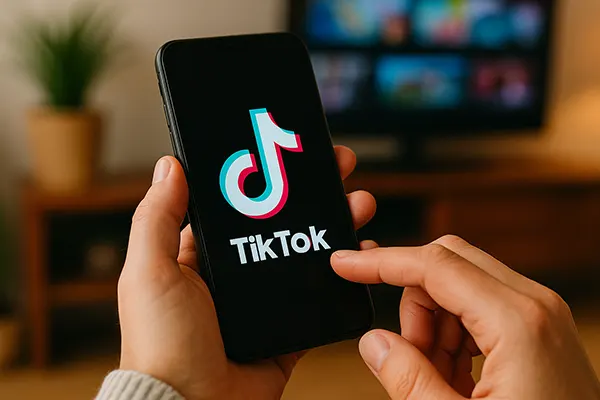
TikTok SEO: How Algorithmic Content Promotion Works in 2025
In 2025, TikTok continues to shape the digital landscape, influencing how users create, discover, and interact with content. As the app grows beyond its entertainment roots, understanding its algorithmic structure has become essential for brands, creators, and marketers aiming to maintain visibility. TikTok SEO is no longer about viral dances alone—it’s a complex system based on user behaviour, content signals, and smart indexing.
Understanding TikTok’s Recommendation Engine
TikTok’s algorithm operates on a blend of real-time behavioural data, contextual tagging, and historical performance. The “For You” feed remains the platform’s signature feature, and the mechanism behind it evolves continuously. In 2025, machine learning models powering this feed have become more personalised and granular, accounting not only for user watch history but also for interaction depth, repeat viewings, and even audio analysis.
Each video is analysed based on its engagement metrics—likes, comments, shares, and watch time. However, TikTok has introduced new semantic indexing methods, allowing it to understand the topic and sentiment of a clip. This helps the system promote niche content to relevant micro-audiences rather than only trending clips.
Importantly, user signals are now weighted based on intent. If a user engages with educational content consistently, the algorithm adjusts to highlight similarly structured videos. For creators, this means the quality and relevance of content can outweigh flashy editing or virality in terms of reach potential.
The Role of Metadata and Captions
Metadata optimisation plays a major role in TikTok SEO in 2025. Keywords in captions, hashtags, and even spoken text—automatically transcribed by TikTok—are factored into ranking decisions. This brings the concept of ‘searchable content’ to the forefront.
Creators must focus on using consistent language tied to their niche, much like traditional SEO strategies. For instance, fitness influencers gain better reach by incorporating specific terms like “low impact HIIT” or “mobility drills” instead of vague descriptions. Hashtags should serve a descriptive rather than trend-chasing purpose.
Moreover, the first few seconds of audio and text in a video are given higher relevance by the algorithm. These cues help the system understand both the content and the viewer’s likely reaction, feeding data back into the recommendation loop.
Search Functionality and Discoverability
Search has matured into a key user behaviour on TikTok in 2025. The search bar is no longer secondary—it now competes directly with YouTube and Google for informational queries. From “how to tie a tie” to “2025 tax rules in UK,” TikTok answers are expected to be timely, accurate, and concise.
To meet these expectations, creators are focusing on SEO-first content architecture. This includes clear structure in speech, visible text overlays, and descriptive voiceovers. TikTok’s AI now uses optical character recognition (OCR) and voice transcription to extract themes and match them to user searches.
Increased visibility for “evergreen” videos is now achievable by tapping into keyword clusters and related search intent. For example, instead of a single “meal prep” tag, videos might benefit from a combination of related terms like “budget meals UK,” “meal prep containers,” and “batch cooking tips.”
Ranking Factors That Matter Most
Several ranking signals have emerged as dominant in 2025’s TikTok SEO. The first is content clarity—videos that quickly establish their topic tend to perform better. This aligns with TikTok’s emphasis on user retention within the first 3–5 seconds.
Second is niche authority. Creators who consistently produce videos around a narrow topic area are more likely to be surfaced to interested viewers. This mimics traditional topical authority models used in blog and YouTube SEO.
Third is caption quality. Clear, descriptive, and keyword-rich captions boost discoverability. Keyword stuffing, however, is penalised. TikTok’s natural language processing models favour coherence and relevance over raw frequency.

What Marketers and Creators Should Prioritise
In the current environment, SEO on TikTok requires both strategic foresight and adaptability. Marketers must treat TikTok as a full-scale search engine, optimising for both algorithmic discovery and manual search queries. This starts with thorough keyword research and careful planning of content themes across multiple posts.
Additionally, data analytics tools—many of which are now integrated into TikTok for Business—offer deeper insight into audience interests and content performance. These metrics should guide editorial calendars, creative iterations, and collaboration strategies.
Another key priority is accessibility. TikTok boosts content that’s inclusive, which includes clear speech, captions, and text contrast. These factors improve engagement and widen audience reach, while also satisfying algorithmic scoring systems.
Building Long-Term Reach on TikTok
Creating content that retains relevance over time is crucial. While trending sounds and challenges still generate bursts of traffic, evergreen educational or informative clips provide lasting value. TikTok favours creators who blend trend participation with consistent, original content output.
Cross-promotion has also proven effective. Embedding TikTok videos on blogs, newsletters, or YouTube Shorts can increase exposure and backlink equity, especially when these placements align with relevant search terms. In 2025, the TikTok-SEO connection extends far beyond the app itself.
Ultimately, the key to long-term reach lies in community building. Responding to comments, engaging with duets or stitches, and fostering recognisable visual identity all contribute to creator reputation, a ranking factor that TikTok’s latest models appear to favour.
